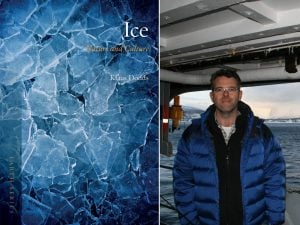
People & Culture
On thin ice: Who “owns” the Arctic?
As the climate heats up, so do talks over land ownership in the Arctic. What does Canadian Arctic Sovereignty look like as the ice melts?
- 4353 words
- 18 minutes
History
It plunged five million people into the dark and cold — the recovery would take years

The first day of 1998 dawned sunny and unseasonably warm in Montreal, a welcome reprieve from the more than 30 centimetres of snow that had fallen over the holidays. But forecasters already had their eye on the next weather system — and it was unprecedented.
An area of high pressure was locked over northern Quebec, pushing cold air south. At the same time, a series of moisture-laden lows was set to track over the Great Lakes and down the St. Lawrence River: perfect conditions for multiple days of freezing rain. Veteran Weather Network presenter Chris St. Clair remembers the talk he had with his MétéoMédia colleague Patrick de Bellefeuille on Sunday, Jan. 4. “This is going to last all week,” St. Clair recalls de Bellefeuille saying. “It’s bad, really bad.”

The next morning, the atmospheric dominoes began to fall. Rain fell continuously over eastern Ontario and southern Quebec for more than 24 hours, freezing as it reached the ground, where temperatures hovered a few degrees below zero. Sidewalks became encased in a layer of ice up to eight centimetres thick in places. Trees snapped under the weight. Hydro lines sagged, dragging wooden poles and steel pylons down with them and plunging some five million people across Ontario, Quebec and the northeastern United States into darkness.
“These huge metal towers started to crumple,” recalls de Bellefeuille, who reported live from MétéoMédia’s Montreal studios throughout the storm. “Everybody was looking at the television going, ‘These things fall?’ We could not imagine.”
Across the city, people who still had electricity opened their homes to family and friends looking to take a shower or eat a hot meal. Others crowded into relief centres. Quebec declared a state of emergency and called in the military to help with the cleanup. It was the largest peacetime deployment in Canadian history. Tragically, 35 people died as a result of the storm, some from hypothermia, others from fires. Carbon monoxide poisoning proved fatal for a number of residents who were operating generators indoors. The total financial cost of the storm was estimated at $5.4 billion.


By Jan. 12, one week after it started, the rain had stopped, and the coldest air of the new year had moved in. St. Clair drove from his home in Kingston, Ont., to Montreal through a world made of glass.

“It was beautiful after the storm because the trees still had ice on them and it was glistening like diamonds,” he says. “But when you looked more closely, it was like a giant scythe had gone and taken the tops off all the trees. And it wasn’t just one field; it was 20, 30, 40 kilometres, all along the side of the road. The immensity of it was overwhelming.”
As Hydro-Québec rebuilt its infrastructure in the wake of the storm, it made significant changes to shore up the grid against future disasters, including burying lines and building anti-cascading towers, lessening the likelihood of multiple towers collapsing in succession.
A quarter century later, the ice storm remains a powerful reminder of our vulnerability to extreme weather. “The thing I’m really buoyed by in the climate change conversation is that the Insurance Bureau of Canada now spends so much time on planning for catastrophic events,” says St. Clair. “We know that one-in-100-year storms are now happening every five to 10 years. We can’t out-engineer weather, but we can engineer for it.”
Are you passionate about Canadian geography?
You can support Canadian Geographic in 3 ways:

This story is from the January/February 2023 Issue

People & Culture
As the climate heats up, so do talks over land ownership in the Arctic. What does Canadian Arctic Sovereignty look like as the ice melts?

Environment
What the collapse of the Milne ice shelf and the loss of a rare Arctic ecosystem might teach us about a changing planet

Environment
In his new book, Klaus Dodds delves into the fascinating natural and cultural history of ice

People & Culture
A celebration of the Canadian Coast Guard’s renowned search-and-rescue capabilities — and more — as the special operating agency turns 60